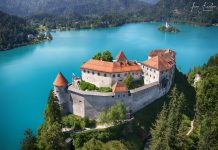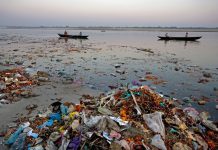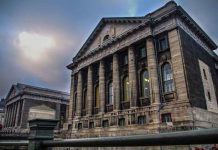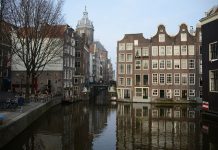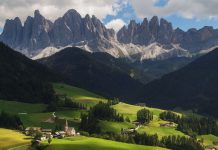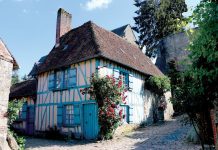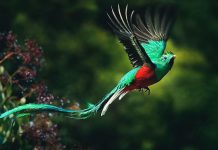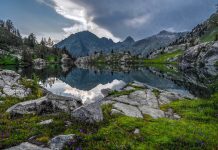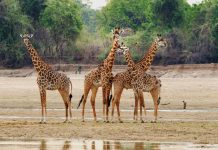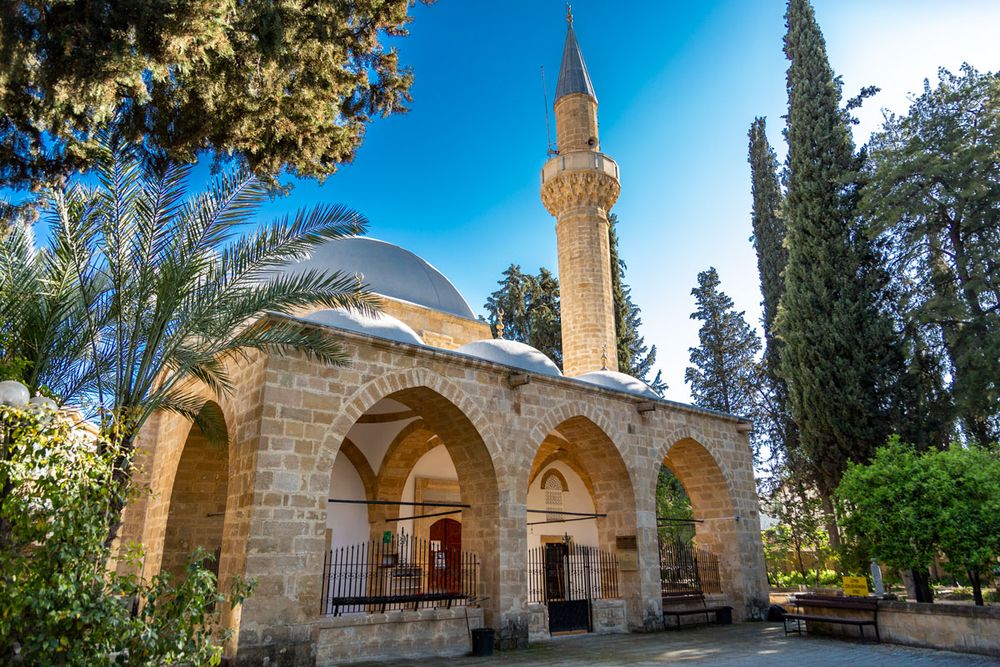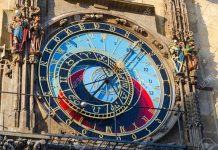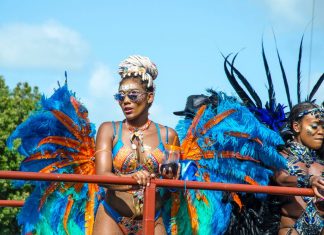This is the one which all visitors should see, not only because of its excellently designed architecture, but because the priest in charge, i.e. the Imam Mahmut Sevket Gazi, is a scholarly man, well versed in the Koran, can read the old Turkish script on the tombs and is always willing to be one’s guide. The writer is very much obliged to him for not only explaining the main aspects of Islam but for allowing me to be present at the noon-day prayer meeting.
The Arabahmet Mosque is at the northern end of Victoria Street, and west of Sarayönü (Atatürk Square). The view picture shows the simplicity of design, and the intermingling of typical Mediterranean trees and shrubs adds to its beauty. The whole place is well looked after and used by the faithful every day.
The most important place inside the mosque is the Mihrab, which is always placed in its relation to Mecca and for both Cyprus and Turkey, that is the south. It is at the Mihrab that the imam leads the Moslems in prayer, where he stands with his back to the people. Steps nearby lead up to a kind of canopied pulpit, where on Fridays and Bayram festivals the imam faces the people and delivers an oration. This part of the mosque is called the Minber. The man who invites Moslems to prayer from the minaret is the Muezzin, five times a day, but these vary with the times of sunrise and sunset.
You will always see a clock near the Mihrab and the one here is an antique grandfather clock that would fetch £500 in an antique sale in London, but let us keep it here in its rightful place. There are no images of people or animals, either as pictures or as carvings. This is because the Moslem idea of God is not a person. If he were, then he must have had a father and mother. Nor do we see anywhere a portrait of the prophet Mohammed.
Islam teaches cleanliness in the holy place, in the presence of God, and so all mosques have washing places outside; you must not take dirt into the mosque with your shoes, and they are left outside the porch.
The colour of Islam is green, hence the furniture is usually painted in this colour. In the desert countries of the Middle Cast, green is for paradise- for by hard work you can make the red-brown desert productive with water and it becomes green. Thus productivity and industriousness are two other aspects of Islam.
When a prayer meeting is in progress, beads are used for counting the prayer repetitions and the whole session lasts about half an hour.
The Islam calendar dates from the flight of Mohammed from Mecca to Medina which occurred in 622 A.D. but the years are not based on the sun but on the waxing and waning of the moon. It is a lunar calendar, so it is not easy to arrive at, the Moslem equivalent of the present year 1979 which 1 understand is 1357.
For Christian visitors to Nicosia it is essential to understand the main features of the Islamic religion in order to appreciate various mosques.
The external features of the Arabahmet mosque typify the simplicity of design used in all mosques in the Middle East. We see hardly any stone carving or ornamentation, except for the Minaret. Most minarets have a balcony for the muezzin near the top where he can call out over the rooftops of the town houses. Immediately below this balcony, the supporting brackets are often richly carved and resemble the stalactites one sees in a limestone cave. Hence the name given to this style is stalactitic and it can be seen on the minaret in fig. 15. The Arabahmet mosque is not an ancient monument yet, as it dates only from 1845.
The remaining mosques are rather insignificant, and one, the Sarayönü near Atatürk Square, is engulfed by the high-rise buildings close by.

